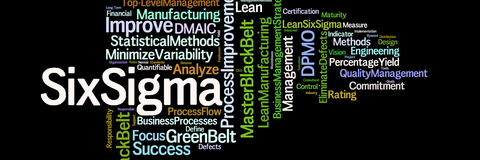Six Sigma, defined by Wikipedia as “a set of tools and strategies for process improvement originally developed by Motorola in 1985,” is a widely used methodology for increasing throughput while focusing on the customer. In manufacturing terms this translates into moving more product through the system faster and more efficiently. In sales terms – particularly for those reps out there hunting down the coldest of the cold prospects and bringing them into the fold, it translates into pulling a greater number of prospects more deeply into the pipeline sooner and, ultimately, closing more sales.
At its most basic, Six Sigma is about discipline. It is about establishing – and adhering to – set processes that increase efficiency and optimize results. Nowhere is discipline more necessary, and more often overlooked, than in the sales process.
We are not suggesting that every organization that has a product to sell needs to go “all in” with Six Sigma, get Black Belt certified and trained in Kaizen. What we are suggesting is that most sales organizations could benefit from a good dose of discipline and structure. The five high level steps of Six Sigma (Define, Measure, Analyze, Improve, Control) provide a solid framework for that discipline.
Define:
Establish your objective – ostensibly to turn a universe of unqualified prospects into opportunities and then closed sales.
Measure:
Define and measure key performance indicators (KPIs) that will demonstrate how well you are accomplishing your objective. Examples of things to measure include:
- Prospecting Velocity – Number of incoming new leads, number of touches on the market, number of new contacts made in market, number of key decision makers identified, number of new target accounts added in market, etc.
- Pipeline Velocity & Health – Number of net new opportunities found in market, length of time from discovery to closure, length of time in each stage, number of “late-stage” opportunities, etc.
- Sales Revenue – There are a number of different ways to break this down. For example, you can look at new revenue vs. recurring revenue, average sale price, average lifetime value of customer, average sale for each of your products, average sale for each of your vertical markets, margin per product, margin per vertical, etc.
Analyze:
Look closely at those KPIs. Do they show movement and growth or is there an area you are falling behind? Are too many leads at the top of the funnel and not enough ready to close? Do you have a full late-stage pipeline but nothing up front? If so, what systems or processes could be implemented to improve results? Other questions to consider include: Are you currently using CRM effectively? Are you leveraging marketing automation tools? Are you actively calling on prospects or are you suffering from inbounditis and counting on marketing to do all the work? Do you have the staff you need? Is management engaged and active in the process?
Improve:
Once you have fully analyzed the situation, the next step is embarking on improvement. If your analysis tells you that your reps lack discipline and fail to record data in CRM, get to work fixing that process. If your CRM isn’t built out to properly aligned with your sales cycle, get it fixed. If you have no means of generating inbound leads, lead scoring and measurement consider leveraging digital marketing… and so on. Chances are that after taking a good hard look at your KPIs and analyzing what you have found, you will find multiple opportunities for improvement. The processes you land on for implementing that improvement should be documented and diligently followed.
Control:
In Six Sigma, “control” is about measuring and sustaining the new process – about keeping on track if you will. The truth is, even after defining and implementing new processes and systems, they are not always immediately followed and results rarely change overnight. By constantly revisiting the four stages listed above, you can keep the ship moving in the right direction.
Partner Effectively:
Why build when you can buy? If you are looking for a streamlined and disciplined sales team with defined and proven systems and processes in place, strong leadership, a fully built out sales infrastructure that leverages the latest in sales and marketing automation tools, consider partnering with sales-as-a-service provider NuGrowth Solutions.
Using our established sales as a service model, proprietary territory management system and established hiring, team building and coaching techniques, we bring the people, processes and systems to bring your organization to new heights in customer acquisition. If you are interested in working with a partner you can trust to grow business, please give us a call at 800-966-3051 or fill out a short contact form and we’ll be in touch soon.

